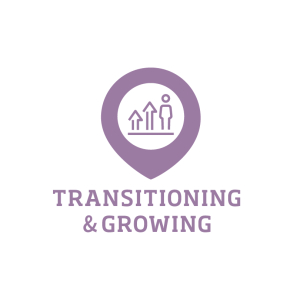
RESOURCES FOR TRANSPORTATION PROFESSIONALS
As a transportation professional, you want access to all the details. This page is for you, and contains the main research findings and supporting documentation behind the writing of this guide.
Funding Needs
As vehicles become more fuel efficient and the rate of electric vehicle adoption increases, less fuel is being purchased, resulting in less revenue for states to maintain their transportation infrastructure. The link between how much drivers use the roads and how much they pay for them has become broken, with some users contributing nothing to transportation funding. As a result, states are studying different funding alternatives to identify more long-term sustainable sources of revenue.
While many alternatives exist, states are coalescing around a promising source of sustainable funding—a road usage charge (RUC), which allows all users of the transportation system to help pay for it. This kind of alternative road-funding policy is sometimes called a mileage-based user fee (MBUF), a vehicle miles traveled fee (VMT), or a distance-based fee (DBF). This research uses the term RUC.
Transitioning from the fuel tax, a source of revenue used in this country for over 100 years, calls for a fundamental examination of the way we pay for surface transportation infrastructure. It involves considerable research and experimentation, as well as problem-solving, policy development, and public outreach. Many states have begun exploring ways to implement RUC, but as of 2022, only three states (Oregon, Utah, and Virginia) have enacted a RUC program. These states have chosen to deploy RUC incrementally and have begun a migration to distance-based charging for certain classes of eligible vehicles. As more states study RUC, identifying implementation successes and challenges from existing RUC programs will aid states in their quest to find sustainable transportation funding. Adding to the complexity of this challenge is the recognition that the fuel tax has two components: the state motor fuel tax and the federal motor fuel tax, each collected by separate authorities.
To help states navigate this complex landscape, this publication extracts best practices from RUC programs around the world into actionable building blocks and implementation pathways. Additionally, this publication assesses the unique challenges of implementing RUC programs and identifies strategies that may be helpful for overcoming them. This publication is a resource states can use to navigate the RUC implementation process to achieve their transportation funding goals. Finally, this publication focuses on state RUC programs and does not address federal RUC programs, which will be explored in the proposed national RUC pilot established by the Infrastructure Investment and Jobs Act.
RUC Framework
Most road pricing projects and programs progress through the following four stages:
Research and Planning—This stage includes all RUC activities prior to the passing of legislation, including research, planning, and outreach. Any pre-legislative pilot or demonstration is included in this stage, including technical design and operations work. Otherwise, the focus of this stage is developing policy, performing financial analyses, establishing communication and outreach activities, and supporting the passage of legislation. Many activities that begin in the research and planning stage continue in later stages.
Setup—This stage begins with the passage of legislation to create a voluntary or mandatory RUC program, and it continues until the program starts live operations. Much of the activity in this stage involves specifying, procuring, and testing the RUC system. This stage also includes the development of program communications, organizational design, and customer service activities to ensure a smooth program launch. Some activities that begin in this stage continue in later stages of the RUC program.
Ongoing Operations—This stage begins when the RUC program goes live and continues thereafter. It involves live operations of the RUC system and includes all activities related to system operations, system reporting and evaluation, and enforcement.
Transitioning and Growing—This stage occurs in parallel with other stages. Some transitioning and growing activities may begin as early as the research and planning or setup stage. These activities continue even as the program enters live operations as the RUC program expands. This stage involves all activities relating to planning for the growth of the RUC program and the transition from current funding mechanisms to a RUC. Achieving transition and growth requires policy and operational planning, economic forecasting, and collaboration with other jurisdictions.
Within each stage, building blocks are grouped into the second tier of classification: activities. Activities are groups of related building blocks that, when taken together, achieve common objectives.
Most building blocks would be completed by the lead RUC agency identified for each state, but some could be completed by other entities, such as state legislators or partner agencies. Some building blocks, especially in the ongoing operations stage, involve continuous activity (live operations). However, the majority involve a significant initial amount of work, typically over several weeks or months, resulting in a recommendation or a document. Such building blocks may not have additional activities for months or years but may be later revisited in an update to the original work. It is likely that many building blocks will be revisited, either in the same stage or in later stages of development; a few building blocks may only be performed once.
Many of the building blocks are necessary to achieve a successful RUC program, regardless of whether their activity is explicitly considered a part of program work. However, some building blocks have proven to be less essential for the implementation of a successful RUC program.
The building blocks are intended to be used beyond this study as a detailed, yet rapidly comprehensible, framework to identify and define the work needed to implement a RUC program. Jurisdictions wanting to research and potentially implement a RUC program should find the building blocks useful as a high-level guide on how to get started on specific activities in a RUC program. The building blocks can be used as a starting point for implementation. Hopefully, reviewing the list of building blocks will spark ideas for additional activities that could be included in a RUC program.
These building blocks are meant to provide guidance to states and agencies exploring RUC; however, completing the building blocks within each stage may not be necessary. States should determine which stage they are in and complete the building blocks deemed most relevant for their needs. States may determine the specific order in which they complete the building blocks within each stage.
RUC for commercial vehicles, including medium- and heavy-duty vehicles, may need separate implementation processes. These vehicles are frequently administered by different agencies than passenger vehicles, so they may use different systems and procedures. While specific mention has been made in some building blocks, they all may apply to commercial vehicles.
Analysis to Support RUC
RUC implementation is facilitated by detailed technical evaluation. Analysis can support policy decisions by taking into account the impacts on the public and various stakeholders. These short analysis guides provide a description of analyses that have proven useful for various states, the data needs for conducting the analyses, suggested data sources, the steps for the analyses, lessons learned from various jurisdictions, and sample output from other projects.
Dive Deeper
Resources for Lead RUC Agencies
